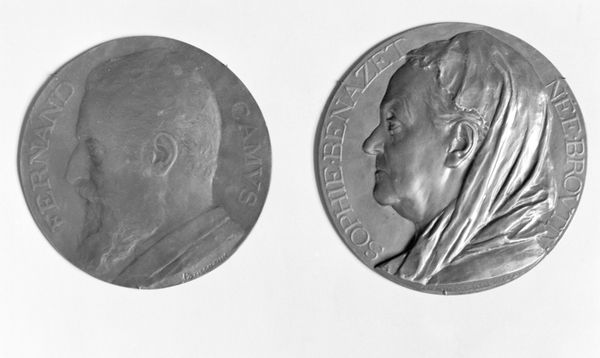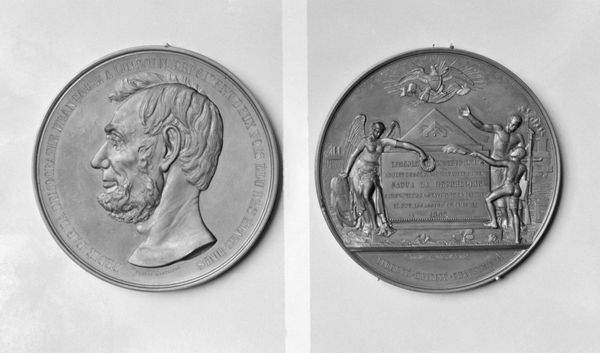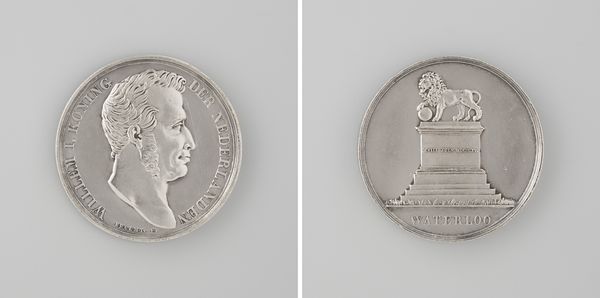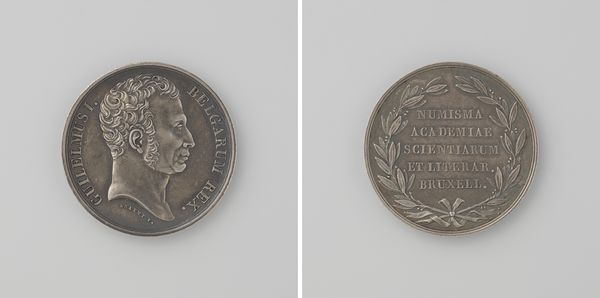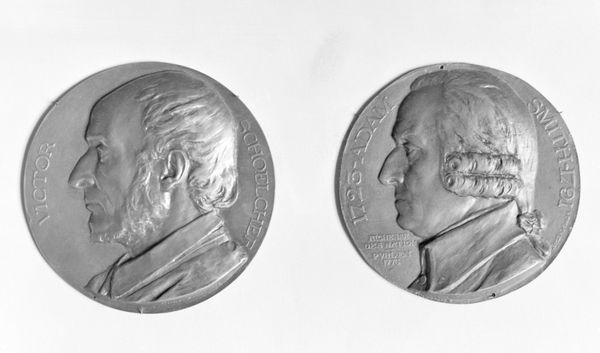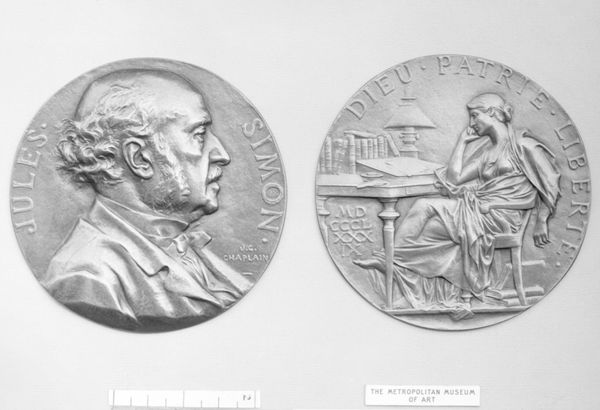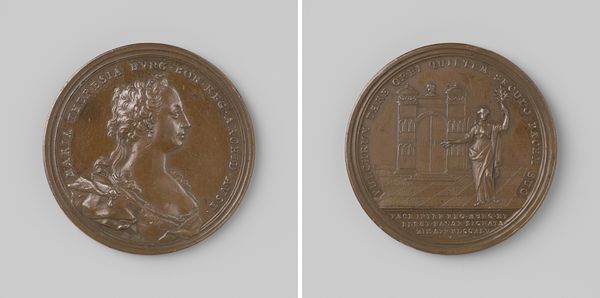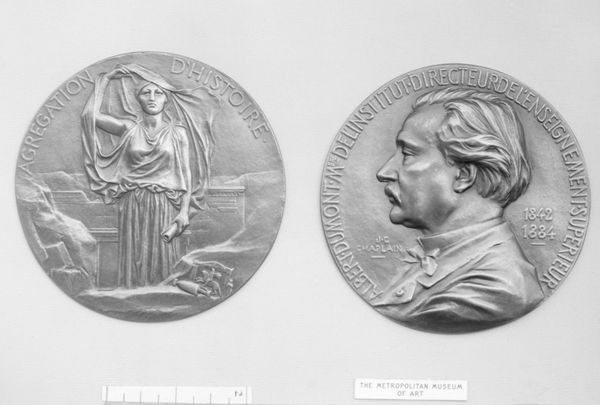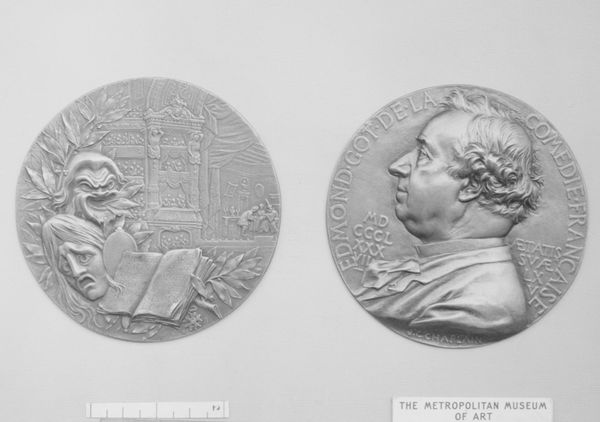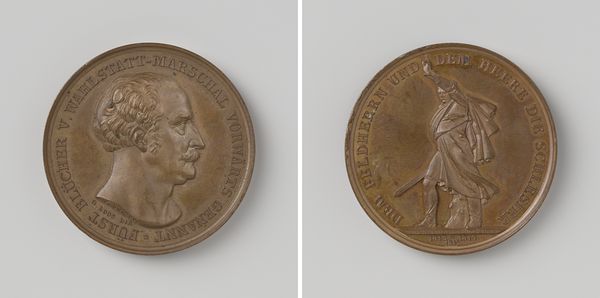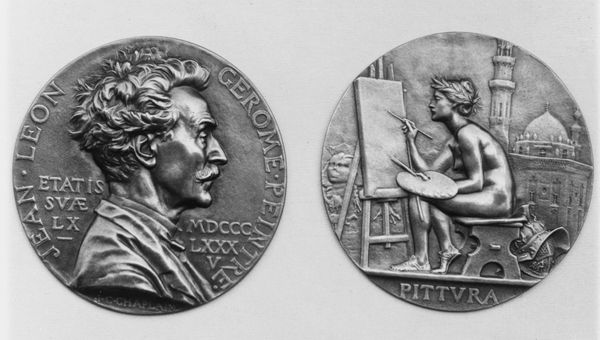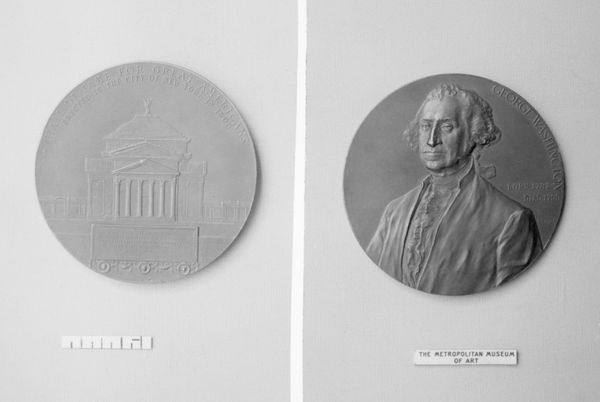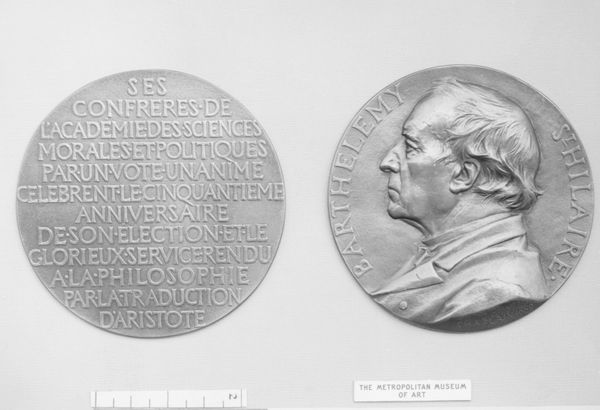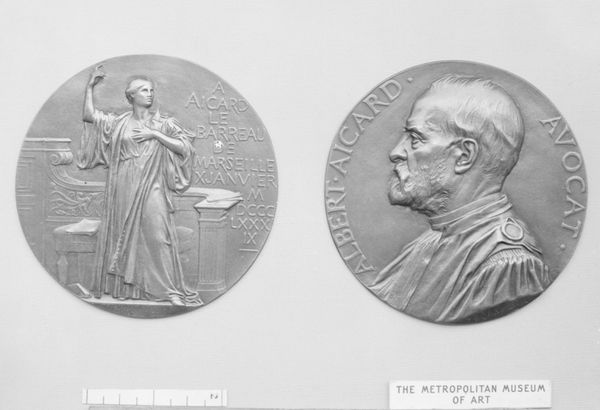
Giovanni Caroto (1495?–1555), Veronese Painter 16th century
0:00
0:00
metal, sculpture
#
portrait
#
medal
#
metal
#
11_renaissance
#
sculpture
#
men
#
decorative-art
#
italian-renaissance
Dimensions: Diameter: 2 3/4 in. (70 mm)
Copyright: Public Domain
Editor: So, this is a metal medal titled "Giovanni Caroto, Veronese Painter" from the 16th century. It's at the Met. The two-sided composition is so interesting - almost like two different coins with seemingly disconnected scenes. What catches your eye about the medal? Curator: Initially, I’m struck by the composition itself. We have two distinct circular fields, each with a very different deployment of form and line. The first features a profile portrait, meticulously rendered with the inscription giving us its subject. On the reverse, we have a scene featuring figures and an elaborate, ornate vertical object of some kind. The relationship between these two sides – that is, the artist represented by his likeness on one side and his creative inspiration symbolized on the other – presents an interesting study in artistic intentionality. Editor: Artistic intentionality... I'm not sure I follow. Curator: Consider the placement of text, the inscription. It frames the portrait, inextricably linking identity to the visual form. The artist isn’t merely represented, but *named*. While the figures are actively interacting with another object on the reverse side, it’s that emphasis on identification on the first side that, structurally speaking, allows one to interpret that reverse image as a depiction of his artist talent being inspired by the classics, perhaps? Editor: That’s a totally different reading than I was expecting. So, you see the contrast as actually harmonizing to make a larger claim? Curator: Precisely. It isn’t about disjunction. The interplay of portrait and symbol makes us focus on not just what the artist is, but what the artist *does.* This interpretation arises from focusing on formal composition. Editor: Wow. Okay, I hadn't considered it that way. I was so caught up in the differences, I totally missed how the visual structures work together to form an argument! Curator: Indeed. And through understanding the form and construction, the material components of a piece we understand much more about the totality of its effect and lasting importance.
Comments
No comments
Be the first to comment and join the conversation on the ultimate creative platform.
